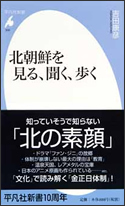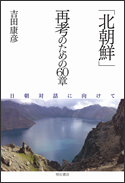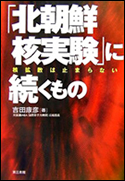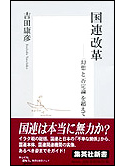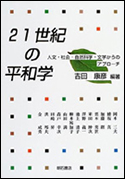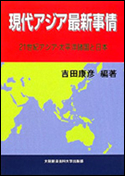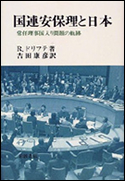[1] US-DPRK Relations on Denuclearization of North Korea
-----President George Bush’s decision to lift North Korea from the list of terrorist-sponsoring states came into force on 11 August, 45 days after the Presidential notification to Congress, but the State Department has announced that procedures for effectuating the decision is being postponed, because of the delay in producing verification mechanism.
-----The two sides agreed, during their 11-12 July meeting of the Six-Party Talks in Beijing, on the declaration of all nuclear programs in the DPRK and disablement of the existing nuclear facilities in Nyongbyong by the end of 31 October, but failed to specify any verification process. They only agreed on the experts’ access to the nuclear sites, submission of additional documents when needed, and hearings from on-site engineers and other experts concerned. They also agreed to seek technical advice from IAEA inspectors. The agreements were limited to formalities. Nothing was followed up since then, with the North Koreans refusing to meet their American counterparts. No reason has been given to Pyongyang’s refusal. Most media reports are that Pyongyang is running out the clock, as the Bush Administration is to end in five month’s time.
-----Pyongyang only sticks to the action-for-action principle. Kim Jong-il’s main concern is to determine the Bush Administration’s sincerity to observe the agreements, namely when and how Washington would for instance approve Pyongyang’s bid for entry into the World Bank, the International Monetary Fund (IMF) and the Asian Development Bank, all of which had closed their door to Pyongyang, with Washington’s opposition on the ground that Pyongyang is a terrorist-sponsoring state. Many observers believe that Kim Jong-il has no intention of scrapping nuclear weapons, which he regards as “a mallet of all fortune.”
-----Unless Kim Jong-il is resolved to scrap nuclear arms, Washington would refrain from giving out any further conciliatory measures toward normalization of diplomatic relations with Pyongyang, including the lifting from the list of terrorist-sponsoring states. In addition, Nuclear facilities in Nyonbyong have been “disabled” to the point of no return. A five-megawatt graphite-moderating reactor has been immobilized; a plutonium-producing reprocessing plant out of operation, and a nuclear fuel-fabricating plant also stalled. A cooling tower, an integral part of the reactor was destroyed on 27 June, while a group of American and foreign media representatives were watching the scene, which was live telecast world-wide. The Joint Statement of the Six-Party Talks in Beijing on 19 September 2005 specifies that the DPRK has pledged to return to the Nuclear Non-Proliferation Treaty (NPT), obviously as a non-nuclear weapon state, and undergo the IAEA Safeguard System, in return for the reciprocal measures taken by Washington and the other parties., namely, in substance, normalization of diplomatic relations, large-scale energy and economic aid, as well as supply of light-water-type nuclear reactors.
-----In fact, Pyongyang has refused to include the number of nuclear warheads, thus the amount of plutonium used therein, in the list submitted to China as chairman of the Six-Party Talks in Beijing in June. Pyongyang explains that the plutonium contained in the warheads would be declared in the third and final stage (Phase Three) of the Beijing agreements. Under the current circumstances, it is highly likely that the final stage could come only after the departure of the Bush Administration in January 2009, thus creating suspicions about the real intension of Kim Jong-il. “Our Dear Leader is prepared to abolish our nuclear arsenal any time, provided that Washington, Tokyo and Seoul should reciprocate our goodwill with promised returns.” This is a direct comment I obtained from a senior Pyongyang official in May. North Korea is endowed with a deposit of 4-million tons of natural uranium, which could be material for nuclear weapons any time, once refined and enriched.
-----Libya has abandoned all nuclear programs at home in exchange for the Anglo-American recognition of the Qaddafi regime in Tripoli, also labeled as terrorist-sponsoring state. U.S. Secretary of State Condoleezza Rice advises Pyongyang to follow the Libyan model. Kim Jong-il refuses. Libya had possessed only a set of small primitive uranium-enrichment devices and nothing else. However, North Korea constructed and had been operating a five-megawatt nuclear power plant, fuel-fabricating plant and reprocessing plant, as well as two larger-scale power reactors under construction. North Korea’s nuclear program dates back to the 1950s, when Kim Il-sung began dispatching a group of 100 young nuclear students to Moscow annually and introduced an experimental reactor from the USSR. North Korea, therefore, has a history of half a century in its nuclear research and development, accumulating nuclear technology and a large group of nuclear engineers at home. My conclusion is that Pyongyang would actually be prepared to relinquish nuclear arsenal, because it is not impossible to resume nuclear programs and reproduce nuclear weapons. Acquisition of a one-million-kilowatt-class light-water reactor could be a good reason for Pyongyang to accept total denuclearization. Supply of such a reactor is referred to in the Joint Statement of the Six-Party Talks in September 2005, as item “for mutual consultations at an appropriate time.”
[2] North-South Relations Strained and Worsened
-----Pyongyang was offended when Seoul’s new President Lee Myung-bak announced his platform toward the North in March, characterized in brief with a non-nuclear, open-economy (North) Korea, which, with the help of the South, would enjoy a 3,000-dollar-a-year per-capita income in 10 years. Pyongyang immediately reacted sharply, saying, “None of your business!” During my stay in Pyongyang in May 2008, all the senior officials interviewed strongly criticized President Lee for attempting to interfere into the North’s domestic affairs. The background is that Mr. Lee had denied the achievements his two predecessors, Kim Dae-jung and Roh Moo-hyun, had made, during their terms of office for 10 years, by pursuing a conciliation and cooperation policy toward Pyongyang. Lee described the period as the “lost” decade.
-----Against this backdrop, a 53-year-old South Korean woman was shot to death by North Korea’s guard in the Kumgang-san tourist area on 11 July, while she was walking outside the zone limited to the foreign tourists. North Korea claimed she had kept walking into its territory, in violation of regulations and in defiance of two warning shots, but South Korean observers witnessed that she was shot suddenly without any advance warnings. The truth is a mystery, only exacerbating relations between the two divided states. The Kumgang-san Tourist Project had been a symbol of North-South conciliation and cooperation, attracting a total of 2-million South Korean visitors and bringing an estimated sum of 500-million US dollars to the North as foreign currency income during the 10-year period. The Kumgang-san, one of the most popular sacred spots for all Koreans, is a complex of rocky mountains located just north of the demilitarized zone along the east coast. The visit of South Koreans to the tourist zone has been suspended indefinitely since the incident.
-----In early August, heavy rainfall again caused extensive damage to life and crops in North Korea, which however has refused any humanitarian aid from the South. Any official contact between Pyongyang and Seoul has been halted.
[3] Mineral Resources in the North in Focus
-----South Korea’s Chamber of Commerce and Industry (KCCI) in Seoul has released a report; ”Joint Development Strategy on North Korea’s Underground Mineral Resources.” (Japan’s SENTAKU magazine reports in its August 2008 issue.) According to the report, the direct U.S. overseas investment in 2006 amounted to 136-billion dollars, China’s investment 18-billion dollars, and South Korea’s 3.8-billion dollars. South Korea accounted for only 21 percent of China in its investment amount. As regards North Korea, a sum of 275-million dollars was invested by China in its mineral resources development projects, while only 59-million dollars by South Korea, one-fifth of China. The KCCI report insists upon the need to participate in resources development in North Korea, at a time when South Korea’s increasing dependence on foreign mineral resources, which is higher than 90 percent. Other main features of the report follow;
(1) Total potential value of mineral resources in North Korea is estimated at 2,287-trillion won (or about 2.4-trillion U.S. dollars.)
(2) North Korea’s iron ore deposits, mostly in Musan near the Sino-Korean border are valued at 74-trillion won, or 80-billion dollars. China’s 通化鉄鋼集団 has been given the right to development in the Musan mines for the coming 50 years at a total cost of 2-billion dollars. Under the contract, China is allowed to transport 10-million tons of iron ore every year out of North Korea. China has been concentrating on industrializing its poorer northeastern region.
(3) Uranium ore mines, one of the richest in the world, are located in Pakchun、Junchun and Pyongsan, with a total estimate of 26-million tons of deposits.
(4) Magnesite mines in Hamhung Province near the Northeastern coast are estimated to contain three-to-four-billion tons of magnesium essential to fireproof materials.
(5) A copper mine in Yesan in the north, the largest in the country, has been into the hand of China’s major metal company, 山東大黄金、which obtained the 25-year right of co-management, together with the North Korean authorities. China’s investment amount is estimated at 8-million Euro.
(6) Zinc mines, abundant almost everywhere, are evaluated at 9-trillion won, or 10-billion dollars.
(7) Gold mines are also estimated to contain gold valued at 23.4-trillion won, or 25-billion dollars.
(8) Tungsten, widely used in weapons and electronic appliances, is also confirmed to exist in eastern areas. Value is unavailable.
-----The SENTAKU article quotes Pyongyang’s senior Labor Party official as disclosing that a British investment company established in 2006 a North Korea development fund at a capital of 5-million dollars, and doubled it in December 2007 in order to win a concession to mine uranium ore and other mineral resources. The move has been followed by other investment funds located in London, Hong Kong and elsewhere.
[4] Pyongyang ---a New Business Center in Northeast Asia
-----Egypt’s largest general construction and telecommunication concern Orascom concluded a contract in February 2008 on a third-generation mobile phone network in Pyongyang and other major cities with a total investment of 400-million dollars within three years. A joint venture, named CHEO Technology, is being funded by the Orascom with 75 percent and by North Korea’s National Telecommunication Corporation with 25 percent. Mobile phone service once started in 2004, but has been suspended for political and security reasons.
-----The Orascom also agreed to finance a reconstruction and completion project for the Rhyukyo Hotel (柳京飯店) in the heart of Pyongyang, which has been left unfinished and abandoned since 1992. Construction of the 330-meter-high and 105-storied hotel, the highest and largest in the world when completed, started in 1987 but was suspended reportedly due to a failure in planning and designing and shortages in fund. Construction work was resumed in April 2008, and is expected to be completed in 2011. A deserted huge triangular skelton in the center of the capital is indeed a headache for Kim Jong-il, the architect of its urban construction program.
-----The biannual 11th Spring International Trade Fair in Pyongyang was held from 13-15 May 2008, with a record 180 enterprises taking part from 16 countries and areas. Eight countries were participating from Europe. They were the Netherlands. Germany, Switzerland, the United Kingdom, Italy, France, Finland and Poland. The number of the participating companies and countries was tripled as compared with the Autumn Fair in 2006, showing an increasing interest of foreign investors and businessmen in North Korea.
-----The 11th Pyongyang International Film Festival is due to be held for nine days from 17 September, co-sponsored by the Embassies of Britain, Germany and Sweden. In addition, the DHL, an international transport and distribution service company, has agreed to join in it as a new co-sponsor. The biannual festival is popular especially among the non-aligned nations in Asia, Africa and Latin America, Despite the absence of diplomatic relations, Japanese film directors and producers are invited to take part regularly. One of North Korea’s recent movies, “The Diary of a Girl Student,” turned out quite popular in France and elsewhere in Europe, after having been shown at the Cannes International Film Festival.
-----Relationship between North Korea and the European Community (EU) is becoming closer. France, the sole country that has not recognized the DPRK in Europe, is prepared to open dialogue with Pyongyang. France is reported to approve the opening of the DPRK’s general representative office in Brussels, which was proposed by Mr. Glyn Ford, a member of the European Parliament, in July 2008. (He published a book, ”Struggle for Survival” in 2007.)
[5] Japan and North Korea----a Mortal Enemy
-----The abduction issue remains unresolved, and would never be settled. It is mostly more than 30 years ago that a dozen of Japanese citizens?a young girl, young couples, lonesome cook and guard man, and a mother and daughter----were abducted by North Korean intelligent agents as prospective teachers of Japanese language and other purposes. And it was in September 2002 while Japan’s Prime Minister KOIZUMI visited Pyongyang to sign a joint declaration for the normalization of diplomatic relations that Kim Jong-il admitted the abduction and apologized as “heroic and reckless” acts by intelligence agents. North Korea officially announced that eight of the 13 officially confirmed abductees were dead, five alive, and two others unknown.
-----The five survivors have returned home. But the Japanese public opinion does not accept the eight as dead, and two others as unknown. Most Japanese people do not trust Pyongyang’s announcement. Since 2006, the Japanese Government has imposed unilateral economic sanctions against Pyongyang, demanding that all the abductees, including those whom they announced dead be returned home, and that all those directly involved in the abduction be handed over to Japanese police for investigation. North Korea has repeatedly said that the abduction issue has been settled and that there are no more abducted survivors. This, Japan does not believe at all..
-----The Japanese and North Korean diplomats resumed talks in Beijing in June and in Shengyang in Northeastern China in August, in a bid to break the deadlock. The DPRK agreed to make re-investigation on all Japanese abductees in exchange for the Japanese side lifting its sanctions even partially. No breakthrough is expected, however, no matter how many times the Pyongyang authorities should make re-investigations. The truth is that the North Korean diplomats only agreed to meet their Japanese counterparts under pressure from Washington. No solution to the abduction issue is likely, unless Japan changes its policy and face the realities. The protracted abduction issue is now a target of criticism and complaints from Washington, Beijing, Seoul and Moscow, as Japan refuses giving out any economic aid to North Korea, saying “No aid until the abduction issue is settled.”
-----There is no other solution than a political decision by Prime Minister FUKUDA, who should fly to Pyongyang for a direct deal with Kim Jong-il, seeking new words of apology and compensation from him. In return, FUKUDA must re-assure him of Japan’s readiness for normalization of diplomatic relations with the DPRK. FUKUDA as Chief Cabinet Secretary, was instrumental in September 2002, when Prime Minister KOIZUMI signed the joint declaration agreeing to normalize ties and extend an unspecified but estimated 10-billion dollars in economic aid in compensation for Japan’s colonial rule from 1910 to 1945. But nothing has been implemented since Kim Jong-il officially admitted to KOIZUMI the abduction of Japanese nationals by intelligence agents. Until then, North Korea had categorically denied any abduction of any Japanese.


